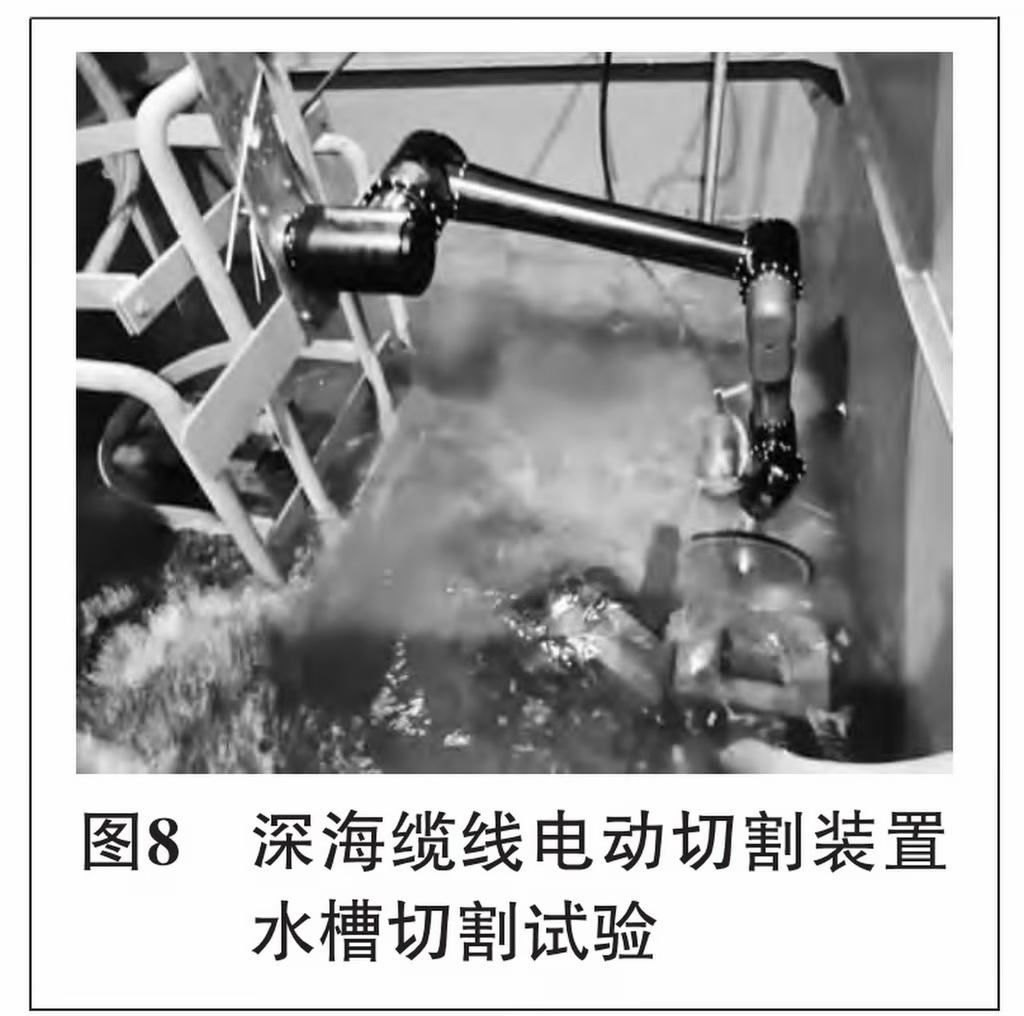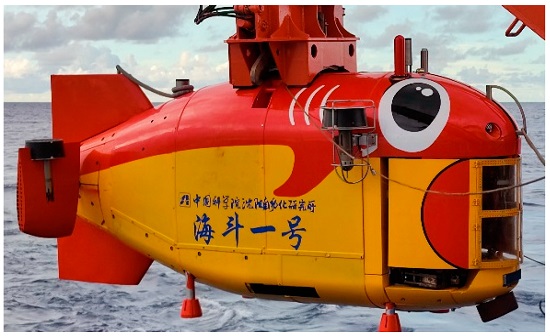
On March 25, 2025, the South China Morning Post reported on a new Chinese underwater system, described as capable of cutting submarine data cables regardless of their level of protection or depth of deployment.
The article highlights that this is the first time a country has officially disclosed the availability of such a capability—one that could disrupt global underwater networks and, as the article suggests, trigger a strategic shock among maritime powers.
The system is able to operate at depths of 4,000 meters and has been specifically designed for integration with manned mini bathyscaphes such as the FENDOUZHE (10,000 m) and the STRIVER (10,000 m), as well as with HAIDOU underwater vehicles (11,000 m, pictured). These are hybrid platforms known as ARVs (Autonomous Remotely-controlled Vehicles), as they can function both as traditional ROVs and as AUVs, thanks to a single fiber optic tether for data transmission.
The cable-cutting tool is based on a 152 mm diamond circular saw paired with a stabilizing arm ("grabber") to prevent destabilizing torque on the vehicle. It is described as capable of cutting armored cables made of layered rubber, polymers, and steel, with diameters around 60–70 mm. While the tool was developed for commercial purposes—underwater work and deep-sea salvage—the article notes its dual-use nature, which should raise serious concerns among other nations. For example, it adds, with the ability to sever cables near strategic nodes such as Guam—the linchpin of U.S. military infrastructure in the so-called “second island chain” aimed at containing China—it could disrupt communications during a geopolitical crisis.
At depths beyond 2,000 meters, submarine cables are never buried, which greatly simplifies and reduces the cost of both installation—and cutting.
The tool has undergone peer-review and was published in the Chinese Journal of Mechanical Engineering. This capability was developed by the China Ship Scientific Research Centre (CSSRC), in collaboration with the State Key Laboratory of Deep Sea Manned Submersibles. It is worth noting that the CSSRC is the R&D arm of CSSC, the world’s largest shipbuilder, which also manufactures naval vessels. CSSRC is active in strictly military fields, including underwater platforms and blast resistance technologies.
Numerous websites picked up the story, but one key point deserves closer scrutiny.
This capability has, in fact, been available for quite some time. Subsea cutting systems using diamond circular saws are already capable of slicing through objects far tougher than communication cables—such as anchor chains, offshore platform legs, and even sunken ship hulls. Modern ROVs now use electric power (next-gen batteries or, for shallower depths, umbilical cables), with cutting tools powered by motors featuring internal stators sealed with high-pressure-resistant resin and external rotors equipped with neodymium permanent magnets.
The French state-owned IFREMER used its EPAULARD ROV—built by ECA and capable of operating at 6,000 meters—as far back as 1987 (!) during the search for the Ustica DC-9.
More recently, the French Navy ordered a pair of vehicles (one ROV and one AUV) rated for 3,000 meters—set for delivery this year—and an additional pair rated for 6,000 meters, with a second 3,000-meter pair due in 2028. The Italian Navy, for its part, has ordered 3,000-meter-rated HYDRONE-D vehicles from Saipem, featuring hybrid capabilities (tethered ROV, acoustic-commanded ROV, and AUV). Russia operates 2 small manned submersibles (RUS and KONSUL) rated for 6,000 meters, deploying them from the YANTAR mothership.
So why would a Chinese newspaper publicize a capability already long known in the offshore industry as if it were groundbreaking? And why would it be “certified” by an official outlet like the Chinese Journal of Mechanical Engineering? In China, no major news is released without the government’s approval.
Given that the article explicitly mentions the military interest in a tool designed to cut communication cables, this is likely a message of deterrence within the framework of Hybrid Warfare—the so-called “Three Warfares” in Chinese doctrine. A message along the lines of: “We have this capability, and if necessary, we can use it to cause serious economic and military disruption—so think carefully before pursuing actions that we might find unacceptable.”
As the saying goes, “Forewarned is forearmed”…
(With special thanks to Commander Antonio Bottiani for his expert input during the preparation of this article.)










.png)
